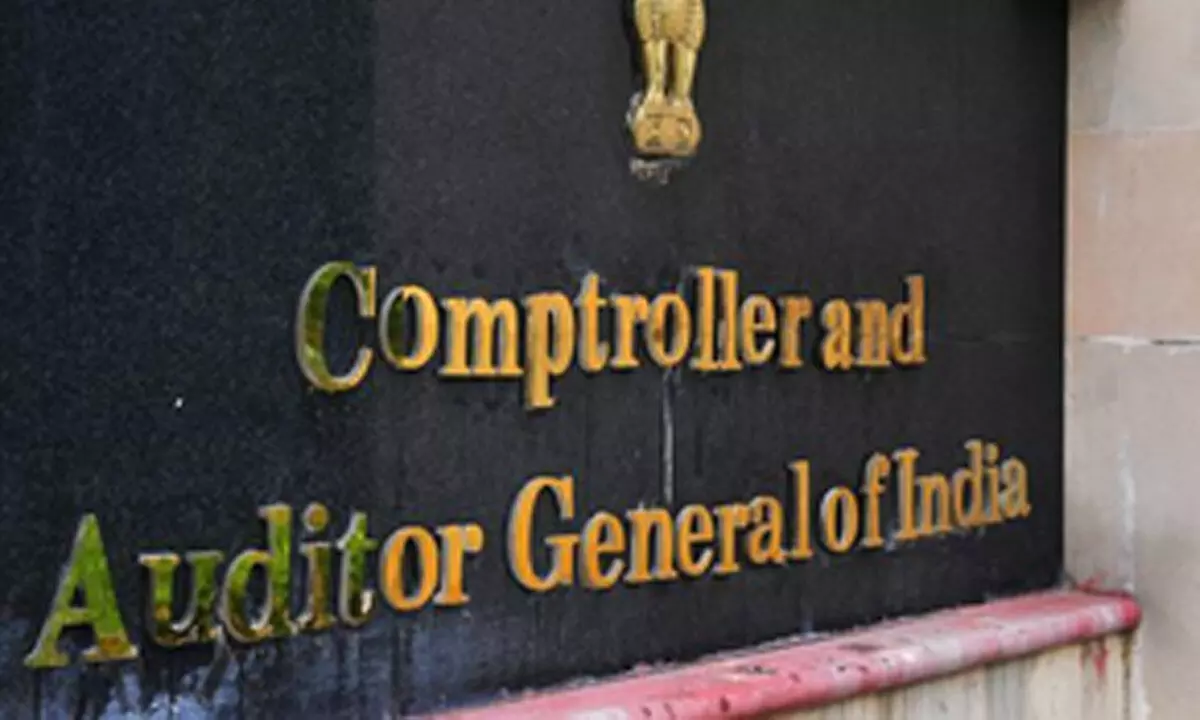Live
- Jharkhand: After see-saw battle, INDIA bloc takes big lead against NDA in early trends
- Konda Surekha directs officials to focus on eco-tourism devpt in a scientific manner
- Assam bypolls: BJP and its allies leading on all five seats
- Applicants squirm as 5 cams conk out at Uppal RTA office
- Flawless Execution: Driver Tenure Solution Achieves Two Years of Zero Production Incidents
- TGBIE extends scholarship deadline to Nov 30
- Leading Data Analytics Expert Boosts Financial Services with Advanced Reports and Dashboards for Hedging and Asset Allocation
- 26 Young India Integrated Resi Schools to come up in State
- BGT 2024-25: Bumrah picks five as India take 46-run lead after bowling out Australia for 104
- Thrilling experience: KV students extract DNA from bananas
Just In
Maha: CAG raises alarm over rising fiscal stress due to mismatch between receipts & expenditure

Comptroller and Auditor General of India (CAG) has raised an alarm over the rising fiscal stress in Maharashtra due to the continuous mismatch between receipts and expenditure.
Mumbai: Comptroller and Auditor General of India (CAG) has raised an alarm over the rising fiscal stress in Maharashtra due to the continuous mismatch between receipts and expenditure.
CAG in its report on state finances for the year ended March 31, 2023, which was tabled on Friday in the state Assembly, said that the share of revenue deficit in fiscal deficit indicates the extent to which borrowed funds were used for current consumption.
However, persistently the high ratio of revenue deficit to fiscal deficit indicates that the asset base of the state is continuously being eroded and a part of borrowings (Fiscal Liabilities) does not have any asset backup.
Even though the budgeting exercise carried out by the state government needs to be more realistic as 18.19 per cent of the total provision remained unutilised, the total expenditure incurred during the year 2022-23 was six per cent less than the original budget and the supplementary budget constituted 15 per cent of the original budget.
Supplementary grants/appropriations as well as re-appropriation were obtained without adequate justification as large amounts remained unutilised.
As far as fiscal sustainability risk is concerned, the CAG observed that the debt stabilisation indicator is currently static rather than conclusively ascending.
“The debt stabilisation indicator, consisting of quantum spread and primary deficit, declined in the period (2019-21) and has since shown a gradual increase in the post-pandemic year, CAG said.
The CAG said that it has not yet reached a stable state for debt stabilisation. Moreover, the improvement in Public Debt to GSDP and Overall Liability to GSDP after the pandemic suggests that the debt situation is not deteriorating but it has not yet reached a threshold wherein it can be concluded that debt stabilisation is on an upward trend.
The outstanding debt (fiscal liabilities) of the state increased from Rs 4,36,781.94 crore in 2018-19 to Rs 6,60,753.73 crore at the end of 2022-23. The outstanding debt to GSDP ratio of 18.73 per cent during 2022-23 was higher than the limits prescribed by the Fiscal Responsibility Budget Management (FRBM) Act (18.14 per cent).
Although the Outstanding Debt for the year 2022-23 remained close to the projections made as per Medium Term Fiscal Policy, the nominal GSDP did not reach the projected levels. Therefore, the state was not able to achieve the targets set for Total Outstanding Liability to GSDP ratio.
“Taken together, the committed and inflexible expenditure in 2022-23 was Rs 2,67,945.58 crore; 65.73 per cent of the revenue expenditure. Upward trend on committed and inflexible expenditure leaves the Government with lesser flexibility for other priority sectors and capital creation,” said CAG.
CAG has made a slew of suggestions including the Government may consider mobilising additional resources through tax and non-tax sources so as to move towards revenue surplus status.
The government may take steps to ensure better value for money in investments. Otherwise, funds borrowed at high cost will continue to be invested in projects with low financial returns.
The state government needs to monitor and manage its debt levels to ensure long-term fiscal stability by adopting remedial measures to rationalise expenditure, explore further sources, expand the revenue base, and invest in revenue-generating assets.
Moreover, CAG has stressed that the state government should formulate a realistic budget based on reliable assumptions considering the needs of the departments and their capacity to utilise the allocated resources.
“An appropriate control mechanism needs to be instituted by the government to enforce proper implementation and monitoring of budget to ensure that savings are curtailed, large savings within the grant/appropriation are controlled and anticipated savings are identified and surrendered within the specified time frame. Priority should be accorded to all cases of pending regularisation of excess expenditure over the budget provision,” said CAG.Maha: CAG raises alarm over rising fiscal stress due to mismatch between receipts & expenditure

© 2024 Hyderabad Media House Limited/The Hans India. All rights reserved. Powered by hocalwire.com






